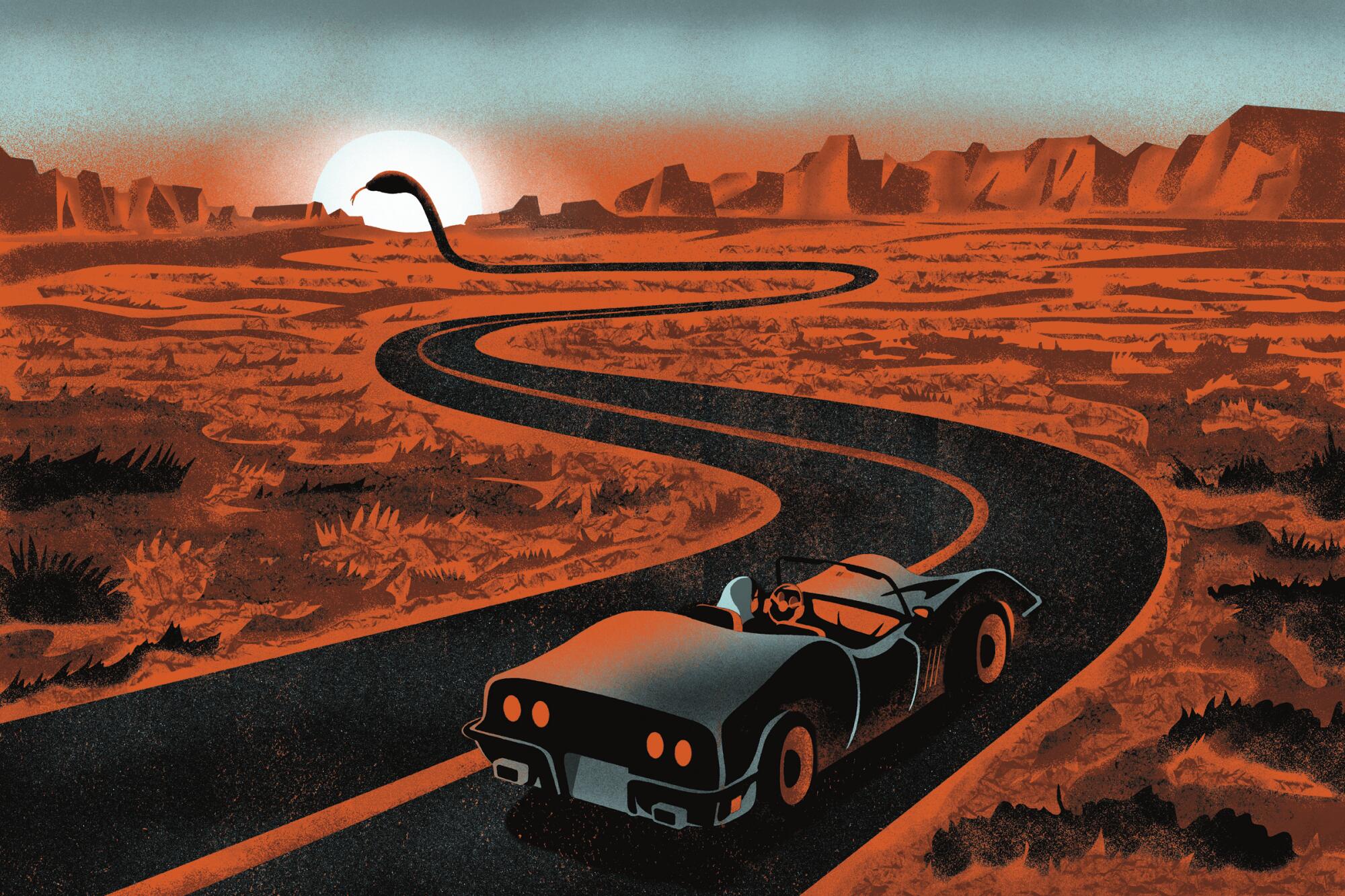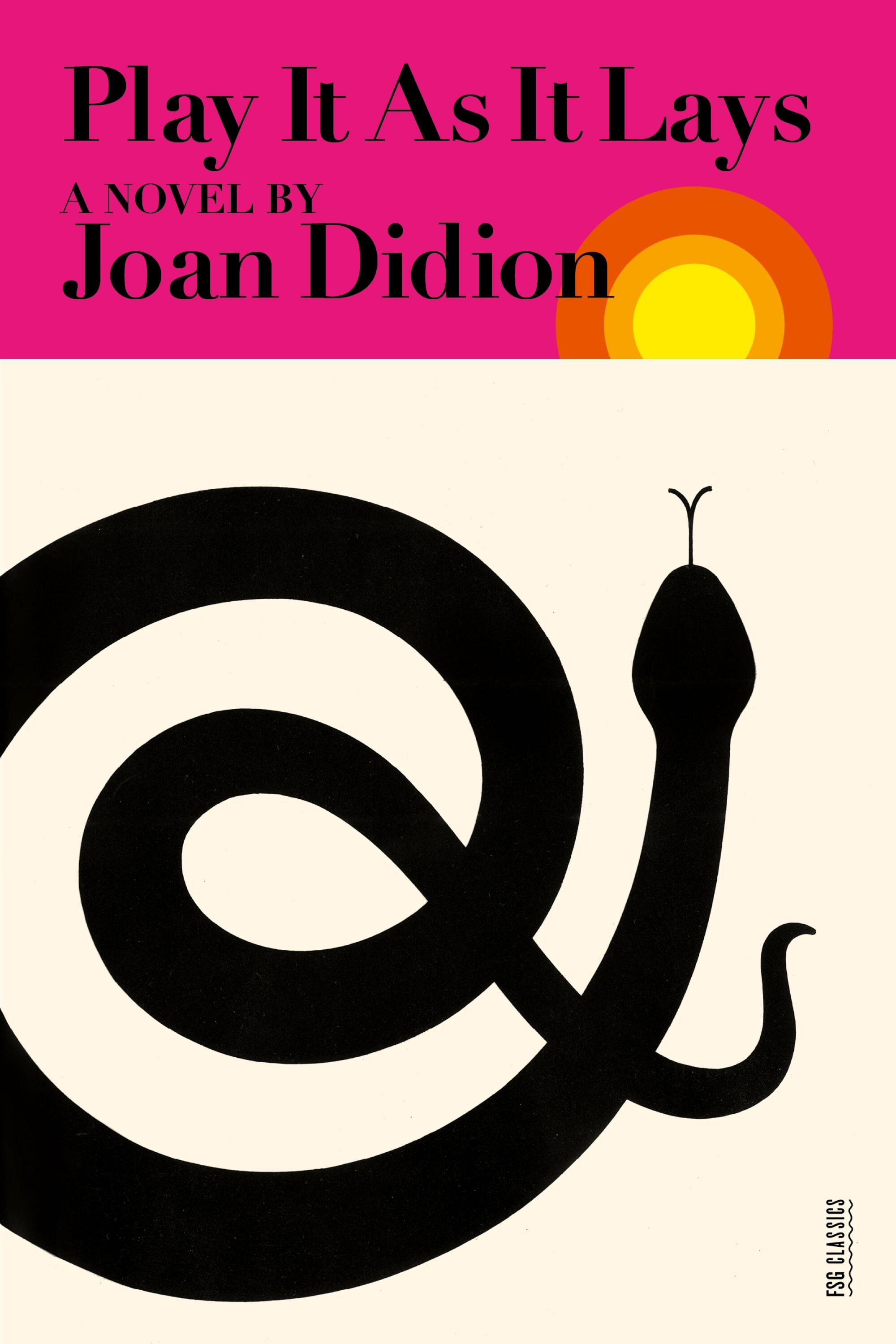
- Share via
Maria Wyeth came to Hollywood for the same reason as the rest of us: to escape from someplace else. When we meet her in “Play It As It Lays,” though, the actor’s hometown of Silver Wells, since swallowed by a missile range in the Nevada desert, has regained a certain appeal, “the restorative power of desolation.” After all, her parents are dead, her marriage is disintegrating, her child is institutionalized, her career is in free fall. Only her father’s advice to her, that life itself is a crap game, has held up over time. “Everything goes,” she laments. “I am working very hard at not thinking about how everything goes.”
The Ultimate Hollywood Bookshelf
“Play It As It Lays” ranks No. 1 on our list of the best Hollywood books of all time.
Yet stasis, implacability, mark Joan Didion‘s 1970 novel as surely as change. Its defining motif — in the form of freeway cloverleafs, coiled rattlesnakes, daily routines and calendrical rhythms — is the spiral or loop, and with it she paints the picture of an industry in decay, saturated with copycat movies, predatory men, hacks and hangers-on. Indeed, the most remarkable aspect of Didion’s portrait is not the ruthless precision with which it renders the film business then, but the clarity with which it corresponds to the film business now. If you have ever had your agent dodge a meeting or encountered a unit publicist running interference on a scoop or been a third-string guest at an exclusive party, you have already lived out a scene from “Play It As It Lays,” which is to say that the broken Hollywood it depicts is decidedly our own. Its only real anachronisms, to today’s eyes, are Maria’s snobbish swipe at TV writers and the $1,500/month rent on her house in Beverly Hills.

The novel endures thanks to its keen understanding that many people in this town see movies as a metaphor, a proxy for other forms of currency: the tax break, the blind item, the call sheet, the high horse. What actual filmmaking does occur in Didion’s cautionary tale takes place “off-screen” — on location, in the desert, for projects about which even the haziest detail is withheld. Hollywood’s coin of the realm is not work, but employment; not talent, but success; not pictures, but the power they imply, or fail to. On the down slope of near-fame, Maria must confront the fact that it’s not her own name, but those of the men in her orbit, that can open doors, fix problems, carry weight. “Just hold on,“ snipes a young actor with whom she has a run-in, feeling that weight bear down on him. “You never told me who you were.”
It is easy, with AI-generated slime creeping through the cracks in our defenses and stories produced by battalions of workers disappeared at will, with its middle class hollowed out, its influence on the wane, its bravest voices hounded by politicians and philistines, to yearn for the Hollywood of yore. But “Play It As It Lays” suggests that such nostalgia is misplaced, even counterproductive. In every era of Hollywood history, its “citizens” — writers, actors, directors, crew members; producers and publicists, craft services and support staff; critics, cinephiles, celebrity-worshipers the world over — have had battles to wage, existential threats to overcome, and for us to seek comfort in the past abdicates our responsibility to the future. Every generation gets the Hollywood it deserves.
Easier said than done. Didion’s Hollywood is a wanderer’s oasis, or maybe mirage, and reckoning with the difference is Maria’s affliction, and by extension our own. Reading “Play It As It Lays” at 19, ensconced in film school at USC and fresh from selling my first piece to West, the Los Angeles Times Magazine, for $1 per word, I could not understand how one falls out of touch with their dreams — the dreaming and the doing, at that age, occurring nearly in tandem. Now 37, a year older than Didion was when she published the novel, I see the problem in reverse: The doing, so often compromised by the practicalities of life, by limits of time and money and energy and opportunity, succeeds only in knocking the dreams further out of reach.
There is, of course, another option. By the end of the novel, Maria details a new dream, of exiting the freeway of her life to can Damson plums and Sweet India relish with her lost daughter, Kate. Whether this is finally her oasis or just another mirage is left to the reader to guess, but if you, like me, have ever harbored the fantasy, you have already learned the moral of the story, which is that escaping to Hollywood turns out to be the easy part.
As for the rest, I keep coming back to the advice my own father gave me, which I like to think Didion and her heroine would appreciate: There’s no such thing as a free lunch.
More to Read
Sign up for our Book Club newsletter
Get the latest news, events and more from the Los Angeles Times Book Club, and help us get L.A. reading and talking.
You may occasionally receive promotional content from the Los Angeles Times.













